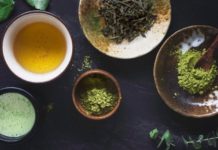
In the field of natural health, we\’ll probably remember 2007 as the year of trans fat-free – and it\’s about time.
In the field of natural health, we’ll probably remember 2007 as the year of trans fat-free–and it’s about time.
The issue of trans fats has been simmering on the back burner for many years. Scientists raised concerns about the negative health effects of trans fats as early as 1990, and by the mid-‘90s, researchers estimated that Canadians had one of the highest intakes of trans fats in the world.
More than a decade later, research and increased consumer awareness finally resulted in mandatory nutrition labelling of trans fats in both Canada (December 2005) and the US (January 2006). New York City turned up the heat on the trans fats issue last December when it banned them from restaurants. Since then there has been an enthusiastic lineup of restaurant chains, coffee franchises, and food manufacturers, including KFC, Starbucks, and Frito-Lay, promising to eliminate trans fats from their food products.
Trans fats, which are transformed fat molecules, are created when food manufacturers take liquid vegetable oils (chemically unstable) and add hydrogen, making them more chemically stable. The resulting hydrogenated fats are semi-solid, which makes them a cheap and handy replacement for saturated fats in food production. They replace butter and lard in baking, are stable enough for deep frying, and offer an inexpensive way to increase taste and shelf life in processed food products.
Trans Fat Trouble
Most of us know that consuming trans fats increases LDL (“bad”) cholesterol levels and decreases HDL (“good”) cholesterol. According to a 2006 study published in the New England Journal of Medicine, eating trans fats is associated with coronary heart disease, death from heart attack, and diabetes. Additional preliminary research suggests that eating trans fats may increase the risk of infertility in women and prostate cancer in men, and may result in more weight gain in the abdominal area than what would be seen with the consumption of natural fats.
Despite ample research, it is unclear whether the Canadian government will take steps to ban or regulate trans fats in food. A multistakeholder task force headed by Health Canada and the Heart and Stroke Foundation of Canada worked from November 2004 to June 2006 on a report titled “TRANSforming the Food Supply.” However, the federal government has yet to take action on their advice, which included limiting and replacing trans fats in food.
Bill Jeffery, national coordinator of the Center for Science in the Public Interest (CSPI), who was also a trans fat task force member, says, “The trans fats in partially hydrogenated vegetable oil likely cause between 800 and 2,000 premature deaths per year in Canada due to heart disease.” The lower end of the range, he explains, is an estimate from the Heart and Stroke Foundation of Canada. The higher figure is extrapolated from an estimate by the US FDA that “22,000 lives could be saved each year if trans fatty acids from partially hydrogenated vegetable oils were replaced by other fatty acids.” (The numbers for Canada reflect smaller population figures.)
“Dramatically reducing trans fats in our diets by the sensible regulatory reforms advocated in the federal trans fat task force report is an important way to prevent most of that needless human carnage,” concludes Jeffery.
While our government sits on the research and recommendations of industry experts, restaurants and food manufacturers are already responding to consumer demand for trans fat-free food.
Trans Fat Transition
The Canadian Restaurant and Foodservices Association (CRFA) has drafted guidelines for its industry based on the task force recommendations. For example, trans fats used for frying may be replaced with stable, higher-quality vegetable oils. For harder fats, the task force recommends products prepared by interesterification, a mixing of oils.
Joyce Reynolds, vice president of government affairs for the CRFA, says the industry is strongly committed to transitioning from trans fats but admits the move brings many
challenges. Restaurant and food manufacturers “need to find healthy alternatives that meet functional requirements such as taste and texture,” she explains. Another challenge, according to Reynolds, is that trans fat-free oils are more expensive. But they’re also less chemically stable than trans fats, which means that restaurants could no longer reuse oil batches for extended periods. Once an acceptable alternative is found, there is also the challenge of securing a sustainable supply in the face of increasing demand.
Restaurants “don’t want to go back to saturated fats,” says Reynolds, because “the industry is very consumer driven, and they moved away from saturated fats because consumers did not want them.” However, according to a new study, consumers would be healthier eating saturated fats than hydrogenated alternatives.
Is Saturated Fat Safer?
Brandeis University and the Malaysian Palm Oil Board conducted a small, first-ever human study to simultaneously examine the metabolic effects of the most commonly used replacement fats, including trans and interesterified fats. Both modified fats negatively affected human metabolism when compared to unmodified palm oil, a natural saturated fat.
However, palm oil is a growing cash crop for the food manufacturing industry, damaging the ecology and wildlife of the tropics. Sustainably produced coconut oil is a better choice. High-quality coconut oil is high in saturated fats, making it stable, but it also offers health benefits.
Interesterified fat still includes the hydrogenation of oil, but is followed up by a rearranging of the fat molecules. This new process is becoming an increasingly popular way to modify fats for food production as it hardens fat and allows for a long shelf life in a way that is similar to trans fats.
Study results showed that interesterified fats negatively affect HDL cholesterol, just as trans fats do. In addition, the researchers discovered that trans fats and interesterified fats both have “a weak negative influence on blood glucose” and interesterified fat “appears even worse in that regard, raising glucose 20 percent in a month.”
Modifying fat in any way appears to be a recipe for developing disease. Unmodified natural fats high in stable saturates, such as found in high-quality butter, are much safer and healthier choices.
Even a much-loved healthy fat such as olive oil can be a health threat if processed or heated to a temperature that changes the molecular structure (320 F, 160 C). According to Udo Erasmus, author of Fats That Heal, Fats That Kill (alive Books, 1993), frying oils results in numerous chemical changes, including the production of trans fats.
Trans Fat-Free Advice
No matter how the government and food industry handles challenges of going trans fat-free, it’s no guarantee for health or safety. CSPI’s Jeffery says, “Simply removing trans fats from a food doesn’t mean it is healthy…it doesn’t convert it into broccoli.”
In other words, deep-fried foods are unhealthy, whether fried in trans fat-free oil or not. We are also well advised to consider the many other factors that determine the quality of a food product, including sugar and sodium content, the addition of preservatives, artificial colours and flavours, and food preparation and processing practices.
From a consumer’s point of view, the solution to the trans fat issue is the same solution for most of our nutrition conundrums: We need to stop expecting processed foods to be safe and nourishing. It’s time to start eating whole, natural foods to prevent disease and enjoy health.
Trans Fat-Free Facts
- In Canada, a product may claim to be “free” of trans fat if there is less than 0.2 g of trans fat per serving in the product.
- Canadian and US nutrition panels may list 0 g of trans fat if the product contains less than 0.5 g of trans fat per serving.
- Health Canada has made it optional for manufacturers to list trans fat content on foods made for babies and toddlers.
- If you read the words “hydrogenated” or “partially hydrogenated” in the ingredient list of a food product, you know it contains trans fat.
- The US National Academy of Sciences says there are no known benefits to human health from trans fat consumption.
















